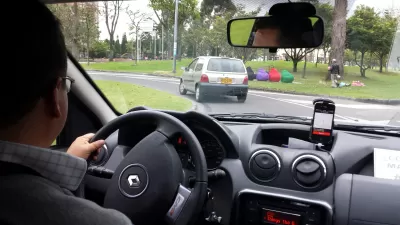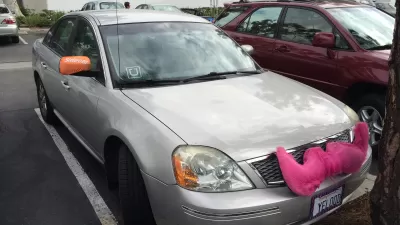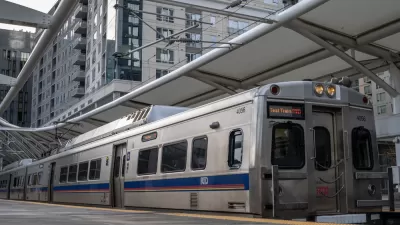The train ride from Summit, New Jersey to Penn Station takes 45 minutes. The real problem: getting to the train. By subsidizing Uber rides to and from the local station, the town hopes to avoid building another expensive parking lot.

Solving the first mile-last mile problem has long occupied a top spot on transit planners' to-do lists. How can we increase transit use by making it easier for people to get from their homes to the nearest station?
The question may have less to do with boosting transit and more to do with making commuters' lives easier.
In the town of Summit, New Jersey, commuters who take the train to New York City can't find anywhere to park their cars for the day. From Priya Anand's piece: "Commuters buy parking permits, but are not assigned spaces, and often waste 15 to 20 minutes prowling for a spot in the morning [...] But building a new parking lot to address commuter demand would be a long-term, multimillion-dollar endeavor."
One answer: subsidize Uber rides to and from the station. "Priced at $2 each way, the rides would cost commuters the same as an all-day parking permit. The deal would reduce demand for Summit's hard-to-come-by parking spaces and create a steady pool of demand for Uber."
Clearly interested in extending its service to car-dependent suburbanites, Uber has agreed to a six-month pilot program serving 100 residents. Summit's city administrator estimates that the program would only cost about $167,000 per year, a tiny fraction of what it would take to install parking.
To be fair, "Summit is about 6 square miles, which keeps ride-hail fares within its boundaries relatively inexpensive." And far more than 100 residents may eventually want to use the program. But Uber has plenty of reasons to make this kind of initiative work: not only does rideshare fully enter the suburbs; daily commuters also offer steady business, unlike weekend partygoers, occasional visitors, and other Uber staple clients.
FULL STORY: How Uber Plans To Conquer The Suburbs

Alabama: Trump Terminates Settlements for Black Communities Harmed By Raw Sewage
Trump deemed the landmark civil rights agreement “illegal DEI and environmental justice policy.”

Planetizen Federal Action Tracker
A weekly monitor of how Trump’s orders and actions are impacting planners and planning in America.

The 120 Year Old Tiny Home Villages That Sheltered San Francisco’s Earthquake Refugees
More than a century ago, San Francisco mobilized to house thousands of residents displaced by the 1906 earthquake. Could their strategy offer a model for the present?

In Both Crashes and Crime, Public Transportation is Far Safer than Driving
Contrary to popular assumptions, public transportation has far lower crash and crime rates than automobile travel. For safer communities, improve and encourage transit travel.

Report: Zoning Reforms Should Complement Nashville’s Ambitious Transit Plan
Without reform, restrictive zoning codes will limit the impact of the city’s planned transit expansion and could exclude some of the residents who depend on transit the most.

Judge Orders Release of Frozen IRA, IIJA Funding
The decision is a victory for environmental groups who charged that freezing funds for critical infrastructure and disaster response programs caused “real and irreparable harm” to communities.
Urban Design for Planners 1: Software Tools
This six-course series explores essential urban design concepts using open source software and equips planners with the tools they need to participate fully in the urban design process.
Planning for Universal Design
Learn the tools for implementing Universal Design in planning regulations.
Clanton & Associates, Inc.
Jessamine County Fiscal Court
Institute for Housing and Urban Development Studies (IHS)
City of Grandview
Harvard GSD Executive Education
Toledo-Lucas County Plan Commissions
Salt Lake City
NYU Wagner Graduate School of Public Service





























